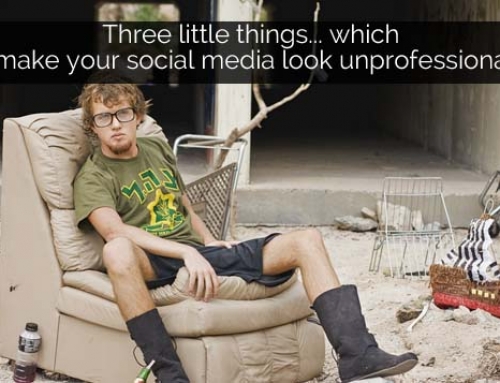As we’ve said many times before, the biggest challenges around leveraging social media in a professional role are not technical. They are strategic, cultural, and creative.
This is a topic which comes up so often with our consulting clients, that we thought a short blog series might be in order. So we’ll have a few articles to follow looking at the issues in a little more depth, together with how to tackle them.
But for now, here are our top three characteristics of an organisation which will find it really hard to sucessfully integrate social media with their communications and marketing activities.
Red Flags to watch out for:
Product or service challenges
This is probably the biggest potential commercial issue, and in our opinion the main area where social media can cause an organisation some real pain. Note though, it’s the existence of social media which causes the pain, not the organisation’s decision to get active and involved with it!
There is no doubt that social media can expose problems. If there are known issues with a product, or you’re aware that a particular service is a frequent cause of customer dissatisfaction, you may well come to wish that social media had never been invented.
In particular, it allows customers to easily connect with one another, and discover that the issue they’ve been told was a one-off…isn’t. That’s often where the trouble starts.
So, if you know you’ve got some work to do in terms of your core offering….social media makes it all the more urgent that you address it quickly. And if you’re being kind to your front line staff, perhaps do it before you launch on your chosen social media platforms.
Restrictive employee culture
Does every communication need sign off from more than one person (or indeed, country, in some examples we’ve seen) before it can leave the building? Do you have policies for anything and everything, until your employees are scared to choose their lunch sandwich without reference to the HR handbook? That’s another bad sign.
This one’s more of a slow burner. You probably won’t have a major PR catastrophe, but neither will your social media presence deliver the benefits you’re hoping for.
In order for your people to succeed on social media, you need to allow them to be human. Otherwise, it’s the equivalent of sending someone into a crowded pub with a 30-page behaviour guide…they probably won’t get thrown out for bad behaviour, but they’re never going to be the life and soul of the party, either.
If empowering your employees to be ambassadors for your organisation, and make sensible decisions without micromanagement, brings you out in a sweat – one way or another, that will need to be addressed.
Fear and / or lack of understanding at the top
Your senior management (or trustees / funders etc) turn pale at the very mention of YouTube, and tremble at the sight of Twitter. They don’t use it and don’t really understand what it does, but they’ve seen articles in the media about Bad Things which happen because of it. As a result they’re convinced that social media is the Root Of All Evil – from lost productivity to employee riots!
In the early stages, this may not actually hamper you that much. One or two champions might begin using social media, and even seeing some benefits from it. But ultimately, if those at the top aren’t on board, things will eventually grind to a halt.
It’s crucial that senior executives at least accept that social media has benefits and are confident in the relevant managers to use it constructively. Ideally, they should understand exactly how those benefits relate to their company, and even have some very basic experience with using the key platforms so that they are clued up on what’s important, and what is and isn’t achievable.
Sound familiar?
If you recognise one or more of those symptoms in your organisation, stay with us. We’ll be tackling each one, and what to do about it, in the next few posts.







Leave A Comment